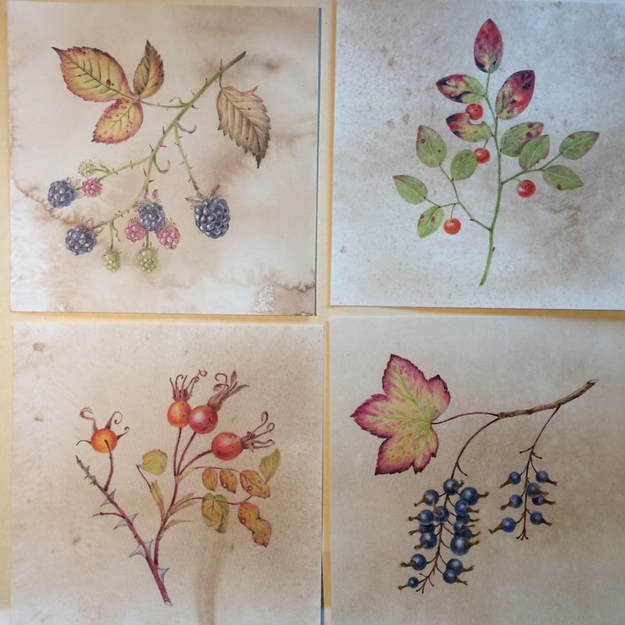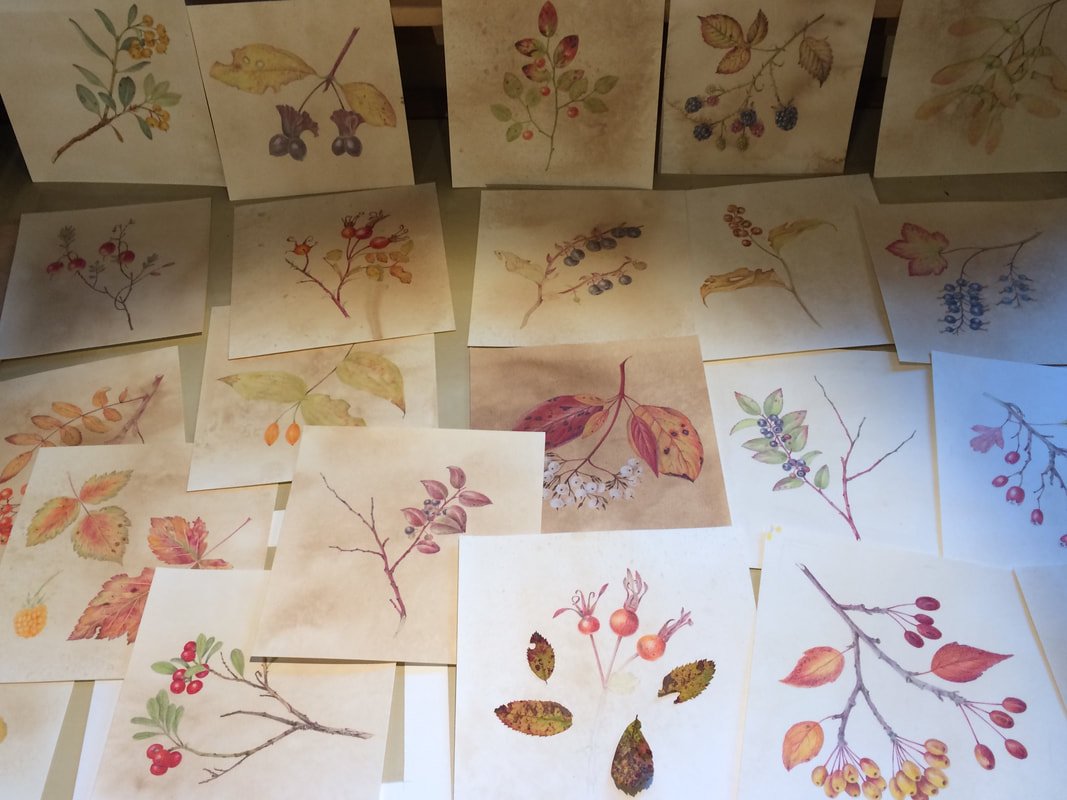For a while I have been curious about the 30 day art challenges that some artists undertake. I have been ruminating over how this experience would inform my botanical work and was eager to try a 30 day art challenge myself. I wasn’t looking for a sudden manifestation of self-discipline as I already draw daily, but was perhaps looking for a simple yet structured adventure. Not to mention, I have been encouraging my students to try a 30 day challenge (as I thought it would do them good) yet, I haven’t done one myself, so last September I set out to record 30 native berries (and other fruit of the forest), assuming I would be drawing one a day. I quickly learned that working in this manner is very rigid and tedious, but not being one who gives up on self-imposed expectations and afraid of getting behind I worked a method of sketching three or four smaller drawings on one day, then using following days to refine the sketches and add more details. I enjoyed going on walks and looking for subject matter, taking photos and sketching. Having a purpose to get outside and look for new plants was probably the most enjoyable part of this exercise. Soon I found myself understanding better the subtleties of differences in leaves, stems, berries themselves and other botanical structures. I also noticed how the same species of plant can vary in coloration and size depending on its habitat. I found hummingbirds and bumble bees pollinating blooming huckleberries and salal (yes! in September), and I found birds munching on Pacific crabapple and elderberries. At the end of September I had 30 sketches that I hope next year to use as studies for finished drawings of native berries possibly including pollinators. Having done a 30 day art challenge, I would recommend it to anyone, and my three guiding suggestions are: get outside, draw and don’t place strict parameters on yourself.
|
Very Berry September on Oregon Coast- a 30 day botanical art challenge. For a while I have been curious about the 30 day art challenges that some artists undertake. I have been ruminating over how this experience would inform my botanical work and was eager to try a 30 day art challenge myself. I wasn’t looking for a sudden manifestation of self-discipline as I already draw daily, but was perhaps looking for a simple yet structured adventure. Not to mention, I have been encouraging my students to try a 30 day challenge (as I thought it would do them good) yet, I haven’t done one myself, so last September I set out to record 30 native berries (and other fruit of the forest), assuming I would be drawing one a day. I quickly learned that working in this manner is very rigid and tedious, but not being one who gives up on self-imposed expectations and afraid of getting behind I worked a method of sketching three or four smaller drawings on one day, then using following days to refine the sketches and add more details. I enjoyed going on walks and looking for subject matter, taking photos and sketching. Having a purpose to get outside and look for new plants was probably the most enjoyable part of this exercise. Soon I found myself understanding better the subtleties of differences in leaves, stems, berries themselves and other botanical structures. I also noticed how the same species of plant can vary in coloration and size depending on its habitat. I found hummingbirds and bumble bees pollinating blooming huckleberries and salal (yes! in September), and I found birds munching on Pacific crabapple and elderberries. At the end of September I had 30 sketches that I hope next year to use as studies for finished drawings of native berries possibly including pollinators. Having done a 30 day art challenge, I would recommend it to anyone, and my three guiding suggestions are: get outside, draw and don’t place strict parameters on yourself. Comments are closed.
|
Dorota Haber-LehighEducator, artist, forager Archives
January 2024
Categories |


 RSS Feed
RSS Feed